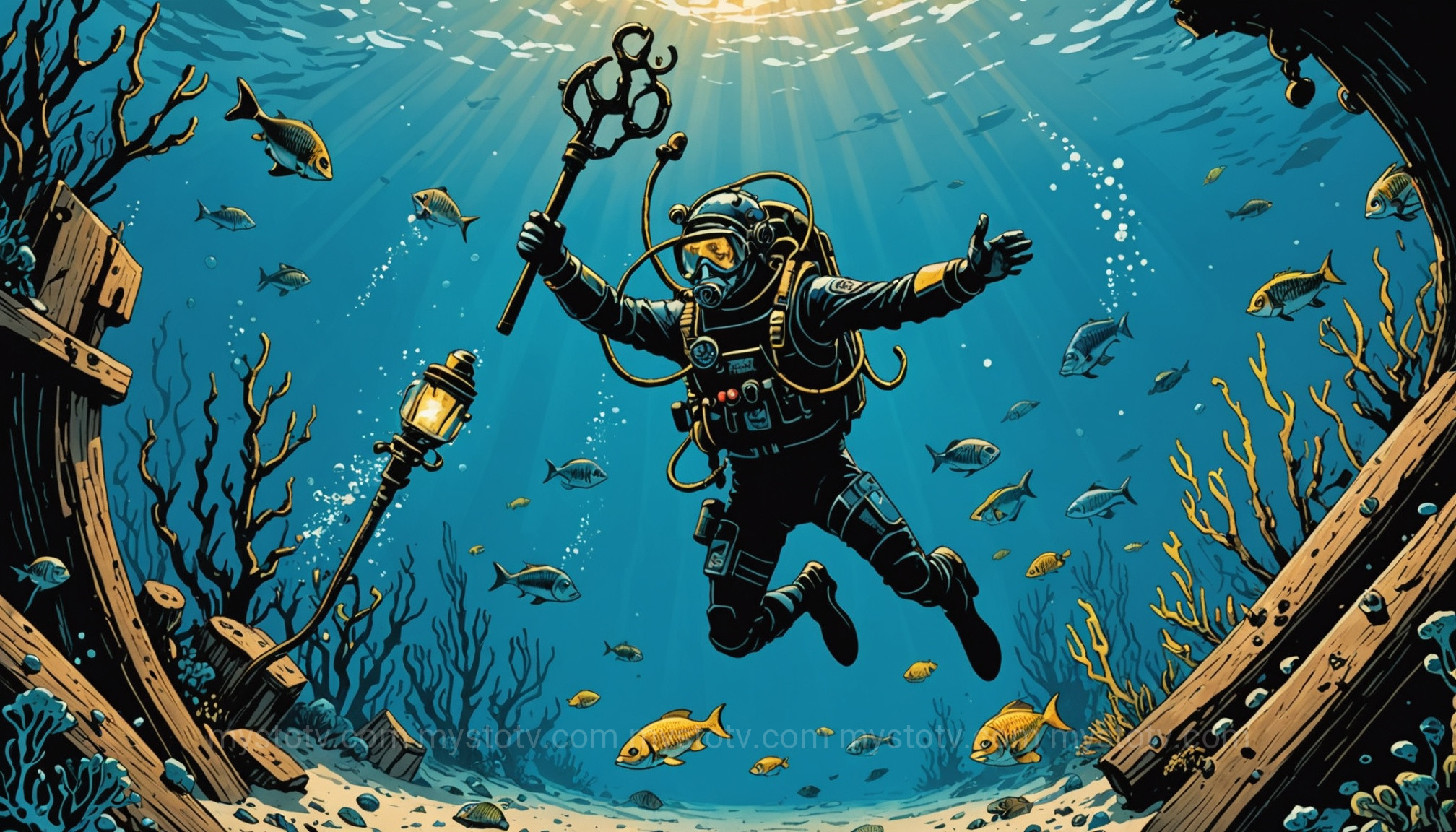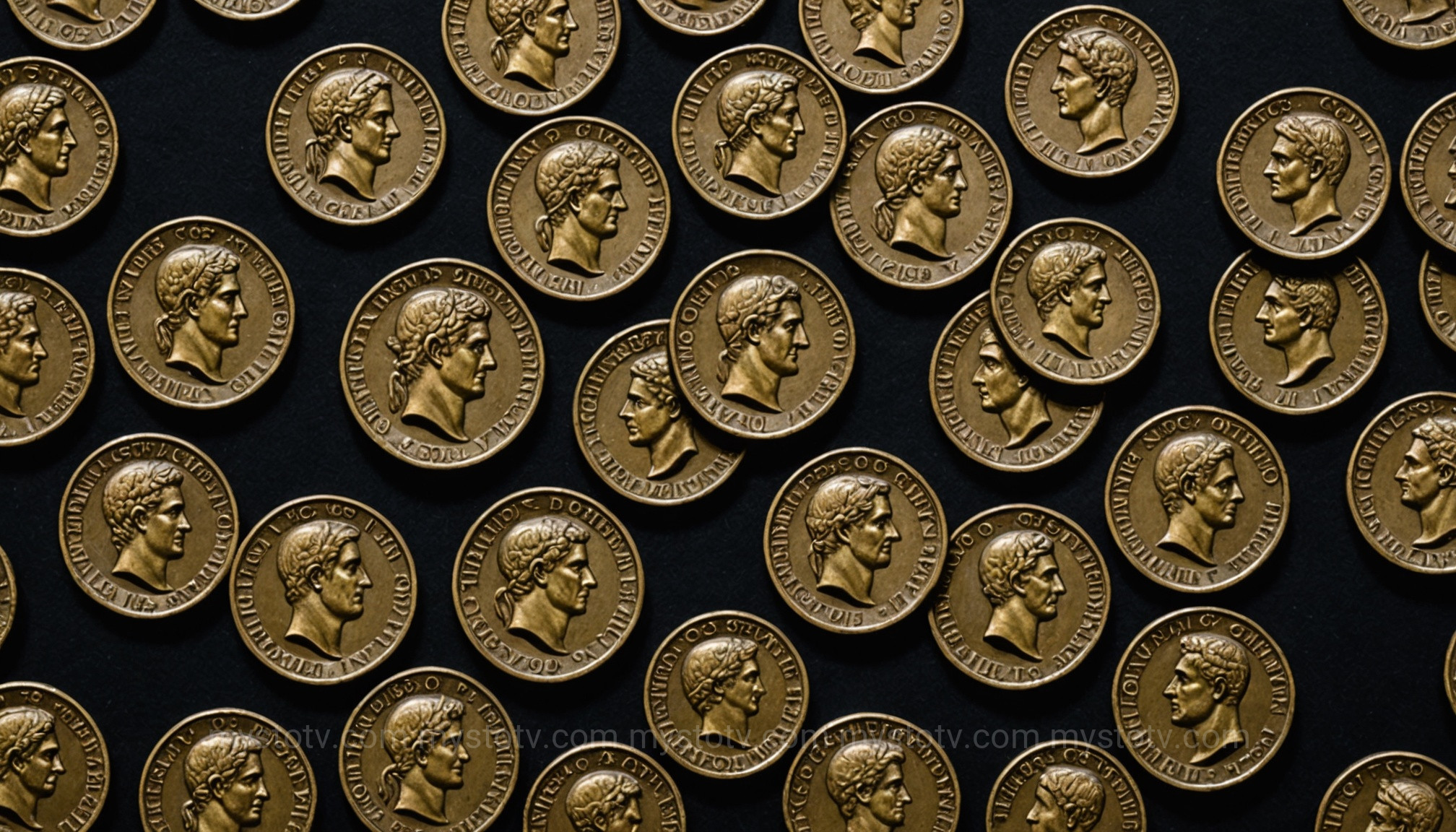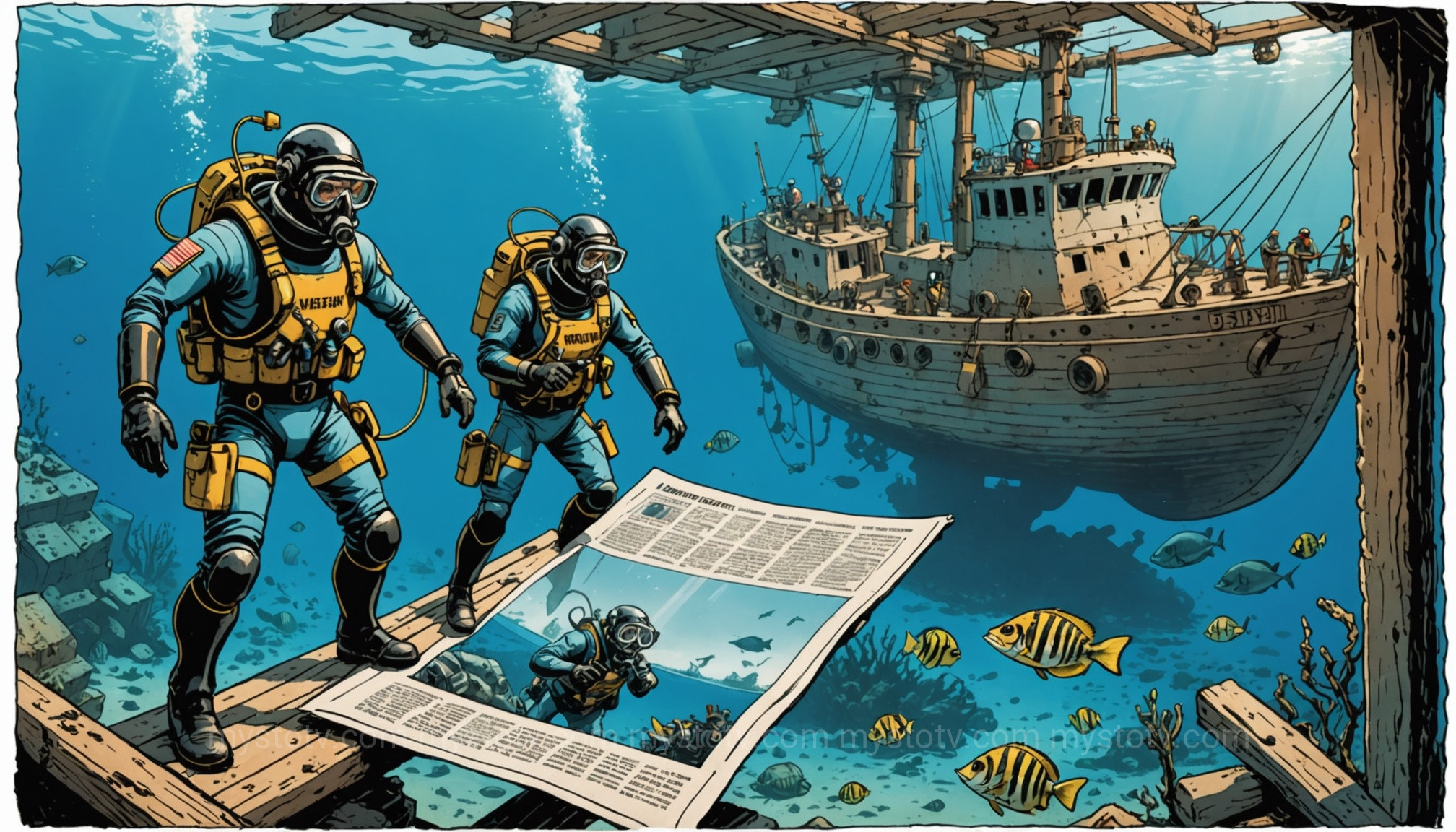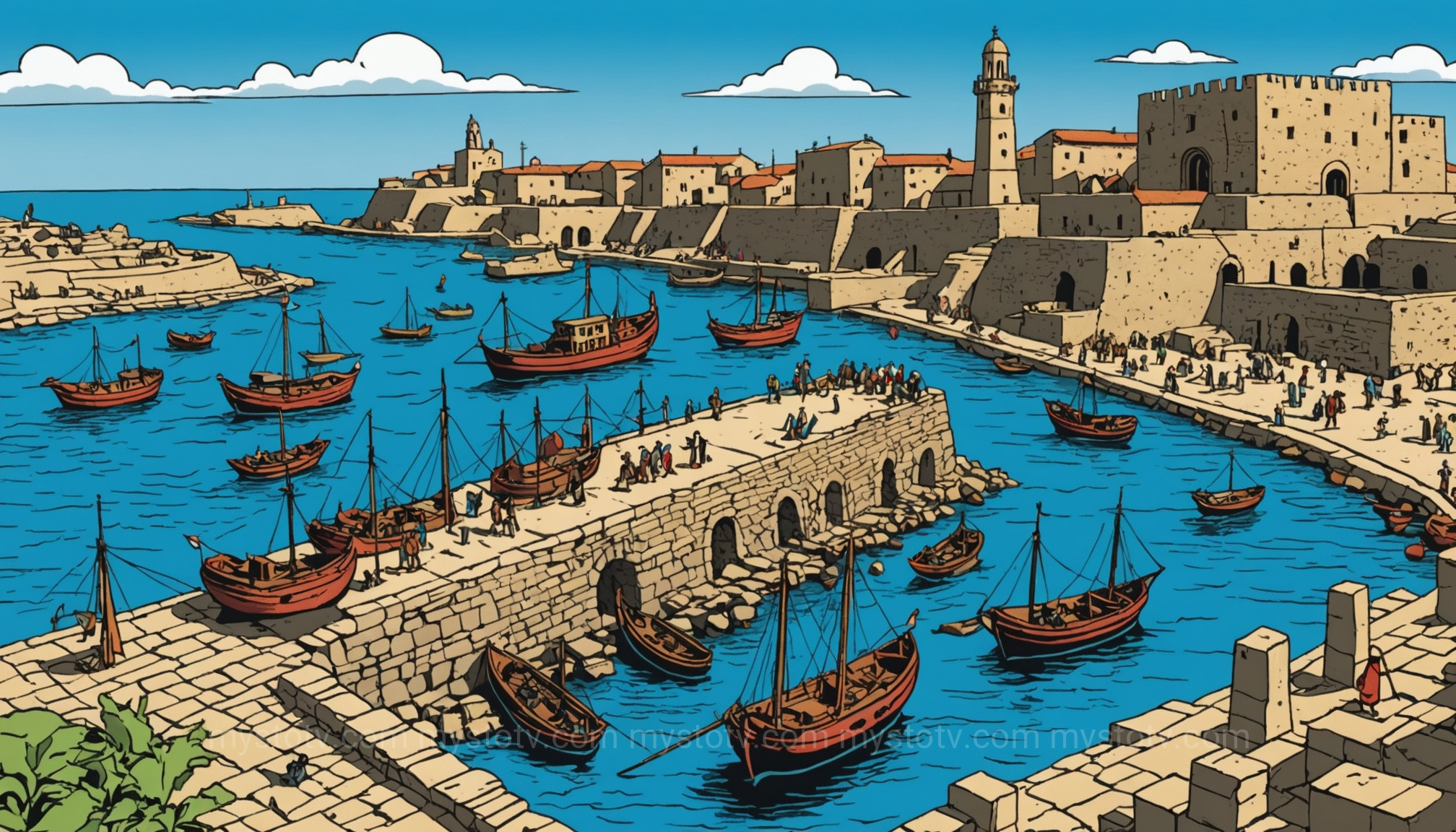I still remember the first time I held a piece of Roman pottery, a simple shard found on a dusty archaeological dig years ago. The weight of it, the faint ridges left by the potter's fingers, felt like a direct-line connection to a person who lived two millennia before me. It wasn’t treasure in the monetary sense, but it was an electrifying link to the past. That same feeling, magnified a thousand times, is what reverberates around the globe whenever news breaks of a discovery like the recent Roman-era ancient shipwreck Israel has revealed off its coast. These are not just isolated artifacts; they are time capsules, entire stories sealed by the sea, waiting to be read. The latest find near Caesarea is a spectacular chapter in this ongoing story, offering an unprecedented glimpse into the vibrant, and sometimes perilous, world of the Roman Empire.
Contents
- 1 An Accidental Discovery: Unveiling the Ancient Shipwreck Israel Kept Hidden
- 2 A Glimpse into Roman Life: Analyzing the Cargo of the Ancient Shipwreck Israel
- 3 The Science of the Sea: The Technology and Techniques Behind this Ancient Shipwreck Israel Discovery
- 4 A Window to the Past: The Historical Context of the Ancient Shipwreck Israel
- 5 FAQ on the Ancient Shipwreck Israel Discoveries
- 6 Conclusion: A Continuing Story Beneath the Waves
- 7 References
An Accidental Discovery: Unveiling the Ancient Shipwreck Israel Kept Hidden

History often reveals itself not with a thunderous announcement, but with a quiet whisper. Such was the case with this remarkable ancient shipwreck. It wasn't found during a targeted, large-scale archaeological expedition, but by recreational divers who stumbled upon its remnants. This chance encounter highlights a thrilling reality: the Mediterranean seabed along Israel's coast is a vast, submerged museum, with countless stories still waiting for their moment of rediscovery. The initial sighting of unusual metal objects and a cluster of ancient artifacts triggered the necessary and legal next step: a report to the authorities.
The discovery underscores the vital role of citizen vigilance in heritage preservation. Without the divers' responsible actions, this historical treasure trove could have been lost to looters or the slow, grinding erosion of the sea. It serves as a powerful reminder that the seafloor is not a treasure chest to be plundered, but a fragile archaeological site that demands respect and scientific rigor.
The Role of the Israel Antiquities Authority (IAA) at this Ancient Shipwreck Israel Site
Once alerted, the Israel Antiquities Authority's Marine Archaeology Unit moved swiftly. This specialized team is tasked with the monumental job of surveying, excavating, and preserving Israel's underwater cultural heritage. Their first order of business was to conduct a preliminary survey to understand the scope and significance of the find. Using advanced remote sensing equipment and meticulous diver-led documentation, they confirmed that the divers had indeed located not one, but two shipwrecks from different periods, lying in close proximity.
The IAA’s involvement transformed a chance discovery into a systematic scientific investigation. Their work is a delicate balance of archaeology and oceanography, requiring them to contend with currents, visibility, and the immense pressure of deep water, all while handling artifacts that have been saturated for nearly 1,700 years. Their expertise ensures that the story of this ancient shipwreck in Israel is not just recovered, but also properly interpreted and preserved for future generations.
A Glimpse into Roman Life: Analyzing the Cargo of the Ancient Shipwreck Israel
A shipwreck is a tragedy frozen in time, but its cargo is a vibrant snapshot of life. The collection of artifacts recovered from this ancient shipwreck Israel has provided is nothing short of spectacular. It’s a diverse manifest that speaks volumes about commerce, religion, and daily life in the Late Roman Empire. The analysis of these objects moves beyond simple identification; it’s about reconstructing the world from which they came. The ship was likely a merchant vessel that met its end in a storm while trying to enter the port of Caesarea, a theory supported by the discovery of its broken anchors, suggesting a desperate struggle against the elements.
The combined cargo tells a story of a prosperous empire with sophisticated trade networks. The presence of both raw materials and finished luxury goods on the same vessel illustrates the complex supply chains that crisscrossed the Mediterranean. It was a world connected by sea lanes, where goods from across the known world could end up in a bustling port city like Caesarea.
Coins That Tell a Story from the Ancient Shipwreck Israel

Among the most significant finds was a large hoard of bronze coins. In maritime archaeology, coins are invaluable. They are the historical equivalent of a date stamp. In this case, the coins bear the images of Emperor Constantine the Great, who ruled the unified Roman Empire from 324 to 337 CE, and his rival-turned-colleague Licinius. The excellent condition of many coins suggests they had not been in circulation for long, allowing archaeologists to date the shipwreck with remarkable precision to the first half of the 4th century CE.
But these coins are more than just dates. They were instruments of imperial propaganda, carrying the emperor's image and authority to the furthest corners of the empire. Finding a large quantity of them clumped together suggests they were in a pouch or vessel, perhaps representing a commercial transaction, a soldier's pay, or the ship's own treasury. Their discovery provides a tangible link to the economic and political realities of the Constantinian era.
Statues and Symbols of an Empire
Perhaps the most breathtaking discoveries were the life-sized bronze statues. Recovering large-scale metal statuary from the Roman period is exceptionally rare. Most were melted down over the centuries for their valuable metal. To find them preserved by the sea is a stroke of archaeological luck. The artifacts included a bronze lamp depicting the sun god Sol, a figurine of the moon goddess Luna, a lamp in the image of an African slave's head, and fragments of large bronze statues.
These pieces were not mere decorations; they were potent symbols of Roman culture and religion. The figures of Sol and Luna represent the cosmic order and divine power, popular motifs in Roman art. The quality of the casting is exquisite, indicating they were expensive, high-status items likely destined for a wealthy patron or a public building in Caesarea. Their presence on the ship suggests the vessel was transporting not just bulk goods, but also valuable art and recycled metal, a common practice at the time.
Everyday Objects, Extraordinary Insights
While statues and coins grab headlines, it is often the mundane objects that tell the most human stories. The recovery of pottery, large storage jars (amphorae), and personal items from this ancient shipwreck in Israel gives us a sense of the people on board. The amphorae would have held wine, olive oil, or garum (a popular Roman fish sauce), hinting at the ship's commercial purpose. The discovery of personal belongings provides a poignant connection to the crew and passengers whose journey ended so abruptly. These everyday items are crucial for understanding the practicalities of life at sea and the types of goods being consumed and transported throughout the Roman world.
The Science of the Sea: The Technology and Techniques Behind this Ancient Shipwreck Israel Discovery

Exploring an ancient shipwreck is a complex scientific operation that blends historical inquiry with cutting-edge technology. The work being done at this ancient shipwreck site off Israel's coast is a testament to the advancements in marine archaeology. The goal is not simply to retrieve objects, but to meticulously document their context, as the position of every artifact tells part of the story of the ship's final moments.
This scientific approach ensures that the maximum amount of information is extracted. Unlike early "treasure hunters" who would have destroyed the site to get to the valuables, modern archaeology prioritizes data. The resulting digital models, maps, and extensive documentation are, in many ways, as valuable as the artifacts themselves, as they allow for continuous study long after the fieldwork is complete.
Underwater Survey and Mapping
Before a single artifact is moved, the entire wreck site is mapped in three dimensions. Archaeologists use techniques like photogrammetry, where thousands of overlapping high-resolution photographs are stitched together by powerful software to create a precise 3D model of the site. This digital twin of the wreck allows researchers to analyze the distribution of the cargo, study the ship's structure, and plan the excavation with surgical precision from their labs on shore. This non-invasive method preserves the site's integrity while capturing an incredible level of detail, from the overall layout of the wreckage down to individual tool marks on a wooden plank.
The Delicate Process of Conservation
Bringing a 1,700-year-old object to the surface is only the beginning of its journey. Artifacts that have been submerged in saltwater for centuries are in a fragile, waterlogged state. If allowed to dry out improperly, they can disintegrate. Metal objects are often encased in a thick layer of concretion—a hard shell of sand, shells, and corrosion products. Wood is saturated and has lost its internal structural integrity.
The IAA's conservation laboratories are like intensive care units for artifacts. Here, specialists embark on a long and painstaking process to stabilize them. Metals are treated through electrolysis to remove corrosive chlorides. Waterlogged organic materials like wood are slowly impregnated with a synthetic wax, like Polyethylene Glycol (PEG), to replace the water and support the cellular structure. It’s a process that can take years, but it is essential to ensure that these treasures from the deep survive for centuries to come. You can learn more about what happens to these artifacts after discovery in our FAQ section.
A Window to the Past: The Historical Context of the Ancient Shipwreck Israel
This ancient shipwreck Israel has brought to light is more than a collection of objects; it's a profound historical document. It provides a direct, tangible link to a specific moment in the 4th century CE, a pivotal era of transition for the Roman Empire. This was the time of Constantine the Great, the emperor who moved the capital to Constantinople and set the stage for Christianity to become the state religion. The shipwreck offers physical evidence of the commerce and culture that defined this transformative period.
Placing the wreck in the context of its destination, the port of Caesarea, amplifies its significance. The ship was not sailing to a remote outpost but to one of the most important cities in the Eastern Mediterranean. Its loss was a personal tragedy for its crew and an economic blow to its owner, but for us, it is an invaluable window into the world they inhabited.
Caesarea: A Bustling Roman Port

Founded by Herod the Great and named in honor of Caesar Augustus, Caesarea Maritima was a marvel of Roman engineering and a cosmopolitan hub of commerce. Its massive artificial harbor, Sebastos, could accommodate hundreds of ships, making it the premier port on the Levantine coast. It was the administrative capital of the Roman province of Judaea and a nexus for trade routes connecting Rome with the East.
The cargo of the shipwreck perfectly reflects the city it was trying to reach: a place of wealth, power, and cultural sophistication. The fine statuary was destined for its villas and temples, while the raw materials and commercial goods would have fed its markets and workshops. The wreck is physical proof of Caesarea's importance on the world stage, even in the Late Roman period.
The discovery of the ship's anchors, broken and abandoned, tells a dramatic story of its final struggle. Ancient sailing was entirely at the mercy of the weather. Ships hugged the coastline when possible, but open-sea crossings were necessary and fraught with danger. Sudden, violent storms, like the one that likely sank this vessel, were a constant threat.
The ship's demise near the harbor entrance is a poignant detail. After a long and likely successful voyage, disaster struck within sight of safety. This ancient shipwreck in Israel is a stark reminder of the risks inherent in the maritime trade that was the lifeblood of the Roman Empire. For every ship that made it safely to port, others were claimed by the sea, their stories and cargoes sealed beneath the waves until, centuries later, they are given a new voice.
FAQ on the Ancient Shipwreck Israel Discoveries
- Why are there so many ancient shipwrecks near Israel?
-
Israel's coastline has been a major crossroads for maritime trade for over three millennia. Its geostrategic location connected empires in Egypt, Mesopotamia, Greece, and Rome. Major ancient ports like Caesarea, Jaffa, and Akko were vital hubs. This immense volume of sea traffic over thousands of years, combined with the inherent dangers of ancient seafaring, means that a significant number of vessels were lost to storms or other mishaps, creating a rich underwater archaeological landscape.
- What happens to the artifacts found in the ancient shipwreck Israel?
-
Once an artifact is recovered by the IAA's Marine Archaeology Unit, it begins a long journey. First, it is carefully documented on-site. Then it is transported to the IAA's specialized conservation labs. There, it undergoes a meticulous, often years-long, process of stabilization to prevent it from deteriorating after being removed from its underwater environment. After conservation, the artifacts are studied by historians and archaeologists. The most significant and well-preserved pieces are eventually put on public display in institutions like the Israel Museum in Jerusalem or in local museums dedicated to maritime history, so the public can learn from and appreciate them.
- Can anyone go diving for ancient artifacts in Israel?
-
No, it is strictly illegal. All antiquities in Israel, both on land and in the sea, are the property of the state and are protected by law. Unauthorized excavation or removal of artifacts is considered looting and carries severe penalties. The correct and legal procedure for any diver, fisherman, or beachgoer who finds a potential artifact is to leave it in place, note the location as precisely as possible, and immediately report the find to the Israel Antiquities Authority. This responsible action ensures that historical sites can be properly and scientifically investigated for the benefit of all.
Conclusion: A Continuing Story Beneath the Waves
The discovery and ongoing study of this Roman-era vessel is more than just another headline; it is a profound addition to our understanding of the ancient world. Each artifact, from the grandest statue to the humblest coin, contributes a new sentence to the story of the past. This ancient shipwreck Israel has shared with the world is a testament to the enduring power of the sea to both destroy and preserve. It reminds us that history is not a static subject confined to books, but a dynamic, ongoing process of discovery. As technology advances and dedicated archaeologists continue their work, we can be certain that the Mediterranean will reveal even more of its secrets, offering future generations their own chance to feel that electric connection to the people who sailed these waters long ago. The story of this ancient shipwreck in Israel is still being written, and it is a story for the entire world.
References
- Israel Antiquities Authority (IAA). Various press releases and official website updates regarding the Caesarea shipwreck discoveries. https://www.antiquities.org.il/default_en.aspx
- Lynch, P. (2022, December 22). Ancient Roman shipwreck and its cargo discovered off the coast of Israel. CNN.
- Schuster, R. (2022, December 21). Trove of Roman-era 'Treasures' Found in 1,800-year-old Shipwrecks off Israel. Haaretz.